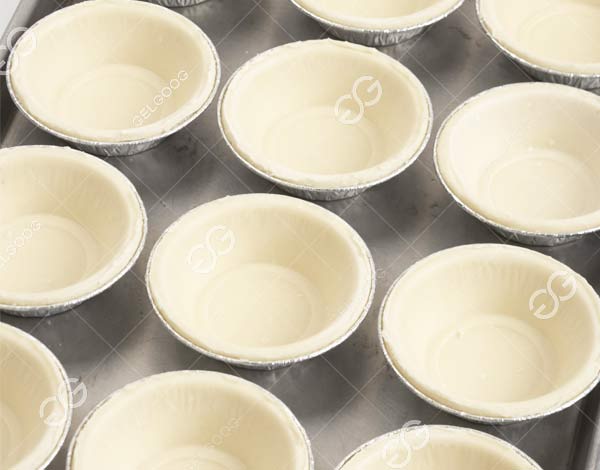Frozen Tart Shells Production Process - Complete Solution
- 2023-12-27 /
- Lisa
Producing frozen tart shells involves a meticulous process aimed at ensuring the quality, consistency, and convenience of these tart shells bases. Here's a comprehensive look at the production process:

1.Ingredient Preparation:
The process begins by assembling high-quality ingredients, including flour, butter, sugar, salt, and sometimes eggs, depending on the recipe. These ingredients are accurately measured and combined in precise proportions to form the tart shell dough.
2.Dough Mixing:
The ingredients are mixed thoroughly to form a cohesive dough. This process is often carried out in commercial mixing machines or industrial mixers. Careful blending is crucial to ensure even distribution and proper incorporation of ingredients, resulting in a consistent dough texture.
3.Pressing and Shaping:
The chilled dough is rolled out to a desired thickness using specialized equipment. It's then shaped into individual tart shells by pressing the dough into molds or using cutting machines that shape the dough into uniform shell sizes and shapes.
4.Pre-Baking:
The tart shells undergo a pre-baking process where they are partially baked without any filling. This step sets the shape of the shells and gives them a head start on the baking process. Partial baking ensures that the shells maintain their structure and don’t become soggy when filled later.
5.Cooling and Freezing:
After pre-baking, the tart shells are cooled to room temperature. Once cooled, they're then rapidly frozen using specialized freezing equipment. Quick freezing helps preserve the quality of the shells by preventing ice crystal formation and maintaining their texture and structure.
6.Packaging and Storage:
Packaging and storage of frozen tart shells involve meticulous procedures. These shells are typically placed in airtight containers or vacuum-sealed bags to preserve their freshness effectively. Ensuring a secure seal on the packaging prevents freezer burn and extends the shells' shelf life. Following packaging, the tart shells are stored in commercial freezers or cold storage facilities until distribution or utilization.
7.Distribution:
The frozen tart shells are distributed to bakeries, restaurants, catering companies, or food retailers. Alternatively, they can be used within food production facilities for creating various desserts and pastries.
The production of frozen tart shells involves a precise and systematic process, aiming to deliver consistent, high-quality pastry bases that offer convenience and flexibility to culinary professionals and consumers alike.









